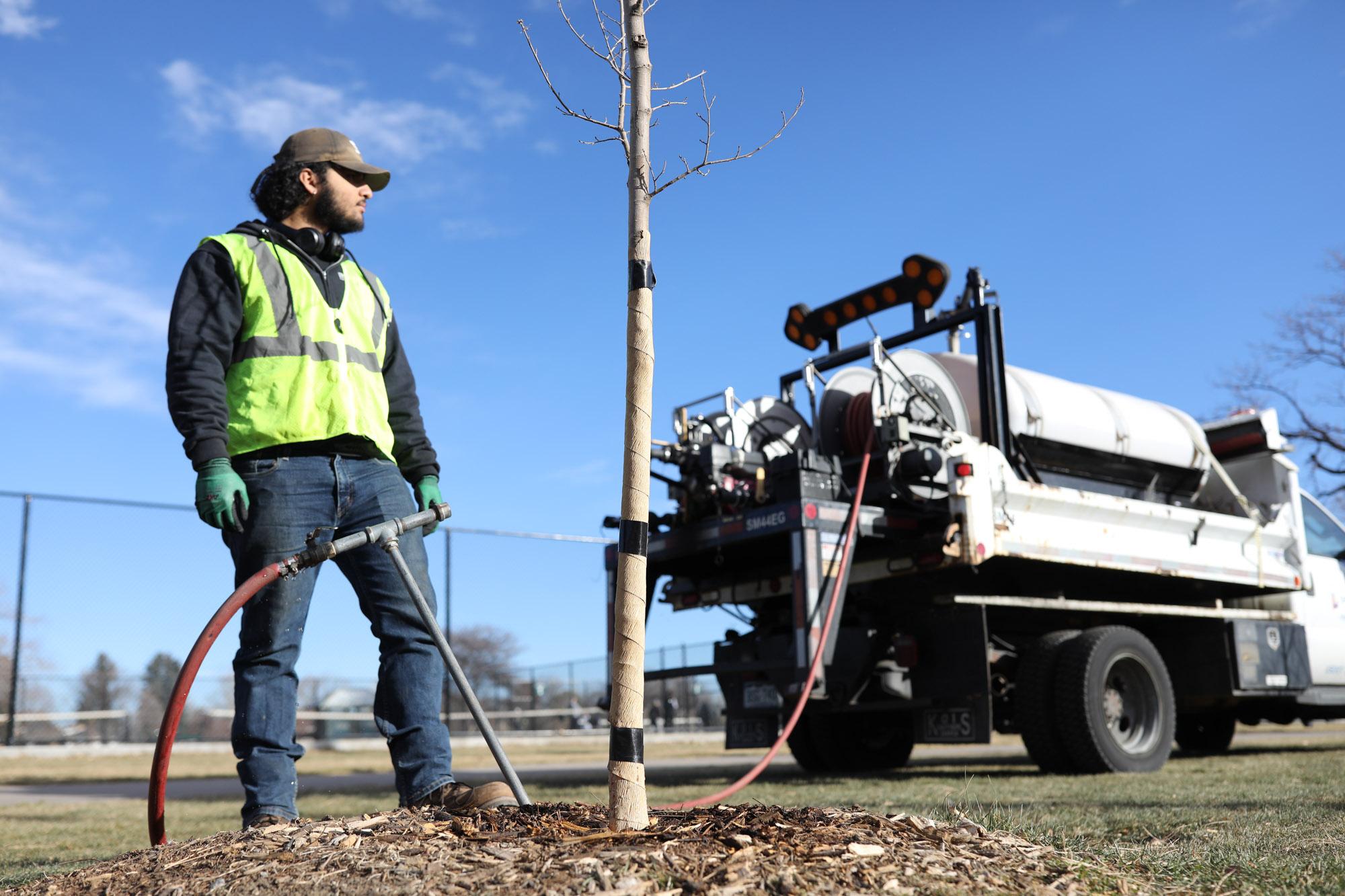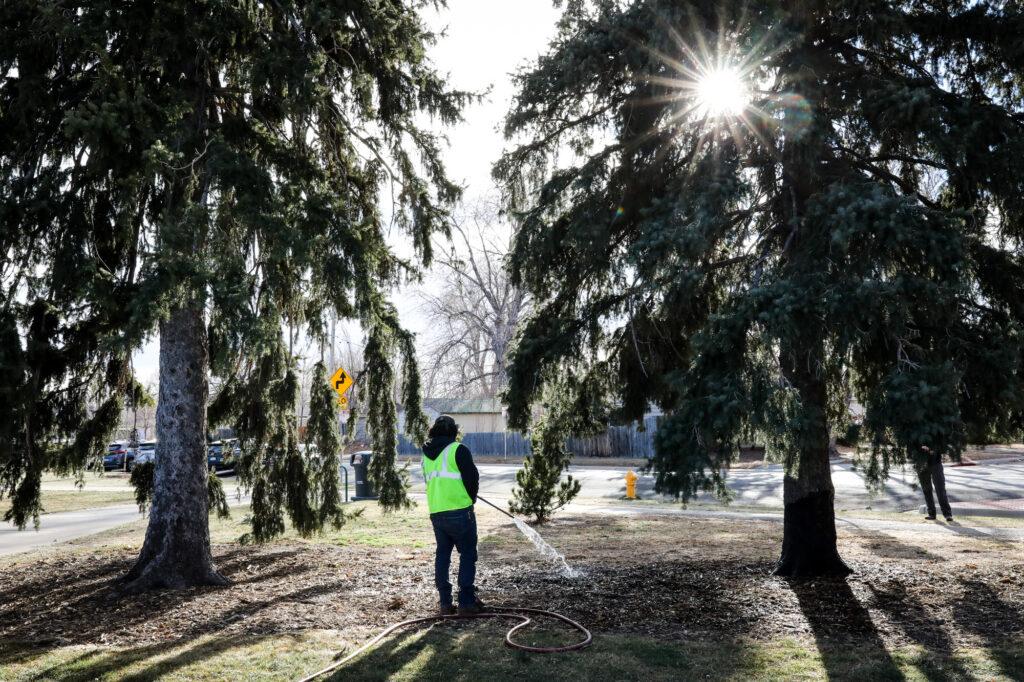
It was another snowless morning when Ben Rickenbacker, Denver's forestry operations manager, examined the cracked soil beneath a blue spruce in Huston Lake Park.
A worker soon arrived with a hose attached to a water truck. For the next few minutes, he provided a small flood meant to help the tree through a historic winter drought along Colorado's Front Range.
"It's really bad," Rickenbacker said. "We usually have some sort of snow cover, but we've had little to no snow this holiday season."
Other Colorado foresters and local arborists have started to worry about the fate of metro Denver's urban trees. Record-dry weather made it even harder for trees to survive in a natural semi-arid prairie. If any die out, the area could lose pieces of a leafy climate buffer that helps suck up carbon, improve local air quality and soften the severity of heatwaves.
Those are all benefits Denver is trying to build on, not lose, as global warming heats up. The city has increased its tree-planting pace over the last few years. Its goal is to expand the urban tree canopy, which now shades about 13 percent of the city, to 20 percent, according to its latest parks and recreation plan.

More frequent and severe droughts could imperil the effort. Beyond killing off younger saplings, a lack of precipitation could make it tougher for older trees to fight off emerald ash borers, an invasive insect already threatening one out of every six trees across the Front Range.
Rickenbacker said winter watering can guard against the threat, but he worries private homeowners haven't made the practice a habit. With that in mind, here are some tips for how to make sure your trees have plenty to drink this holiday season.
Focus on the most vulnerable trees
Jim Klett, a horticulturist at Colorado State University, said not all trees face the same threat from drought and dry weather. Any trees planted within the last three years should be first in line for the hose, according to Klett. Evergreen trees should be watered next since their needles continue to demand water over the winter.
"With all the foliage on them, they're going to desiccate and dry out very quickly. So evergreens are even more critical than deciduous trees," he said.
Finally, he recommends watering any trees with shallow root systems like birches, maples, lindens, alders, hornbeams, dogwoods, willows and mountain ashes. And if you don't know what trees you have, smartphone apps can help you figure it out.
Wait until the weather warms up
Klett advises only watering trees when temperatures rise above 40 degrees Fahrenheit. Mid-day watering will allow the moisture to soak into the roots before freezing temperatures at night.
Provide the right amount of water
Pay attention to the thickness of the trunk. When trying to figure out how much to water, Klett said to apply 10 gallons of water for every inch of trunk diameter. For example, a 3-inch tree would get about 30 gallons about every three weeks.
It's a mistake to pour all the water directly against the base of the trunk, Klett said. Instead, he recommends watering along the "drip line," which is the area beneath a tree’s farthest-reaching branches.
"You probably want to water there, because that's where most of the feeder roots are for the tree," he said.
Water the trees, not the sewers
Denver waters trees on city property through a pipe tucked about an inch into the ground. The technique ensures the water sinks into the soil rather than running off into a storm drain. If you want to apply a similar strategy, most hardware and landscaping shops sell special forks or needles that can attach to the end of a hose.
Mulch it good
Klett recommends applying mulch around trees to conserve soil moisture. If the ground gets dry enough to crack, the extra layer can also help protect tree roots from cold, dry air.
Related stories
- Plants could be even better at fighting climate change. A Boulder garden shows ozone is holding them back
- This new book explores how climate denialism is making its way into US classrooms
- Ask a Gardener: how do I prepare my plants for winter?
- If the Colorado River keeps drying up, a century-old agreement to share the water could be threatened. No one is sure what happens next.
- Promised reviews of sage grouse protections, oil and gas policies could impact Colorado’s public lands








